Home » Regimental Association
Category Archives: Regimental Association
The London Regiment in Iraq
We have received a set of very evocative photographs from 2014 during the deployment of members of the London Regiment to Iraq. They show Messines Company carrying out their duties in the southern sector of Iraq near Basra and Kuwait and have been kindly passed over to us by Geraint “Taff” Hughes, who has been a stalwart member of the London Irish Rifles for many years.
We would like to pay tribute to all the men and women who served in Iraq over many years and would particularly like to thank Taff Hughes for sharing some of the memories from his time in the country.
Quis Separabit.
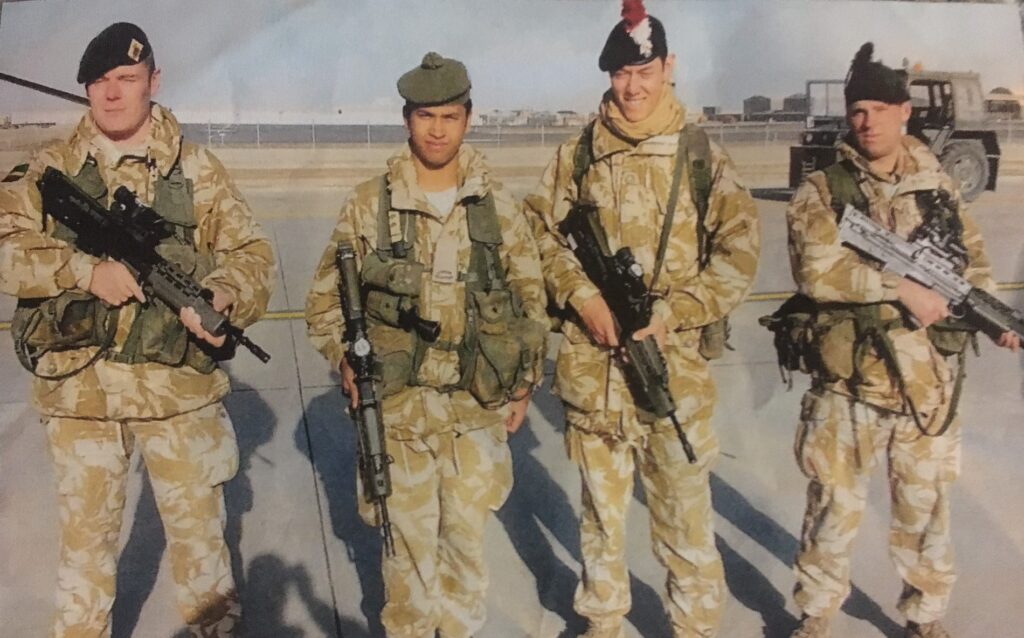
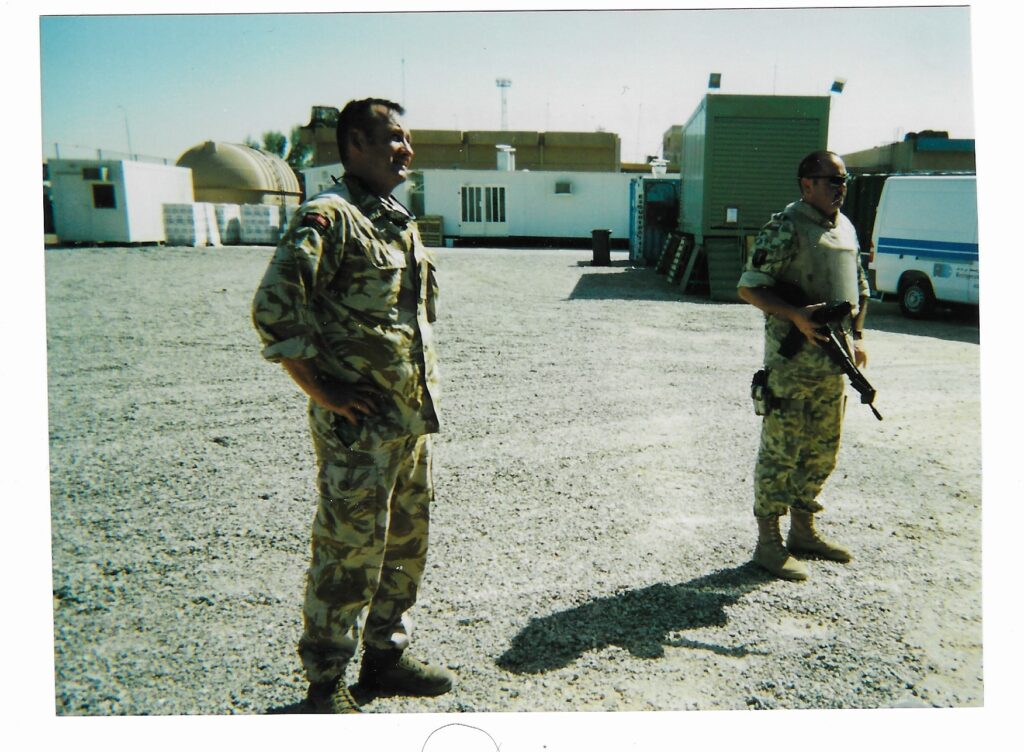
Umm Qasr – August 2004. 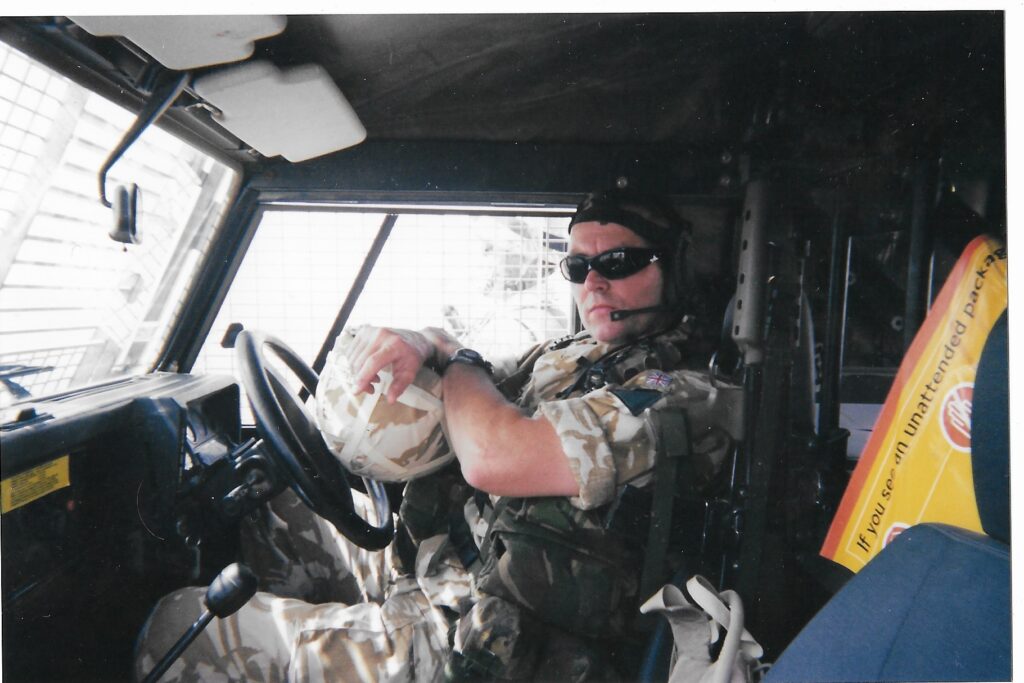
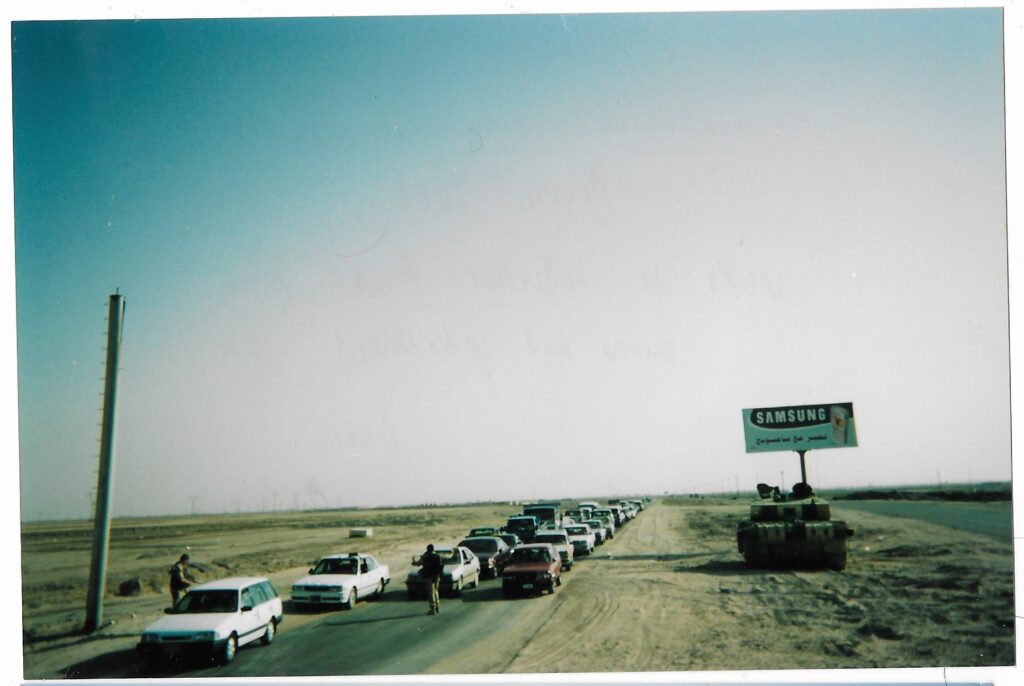
Operation Centurion – August 2004. 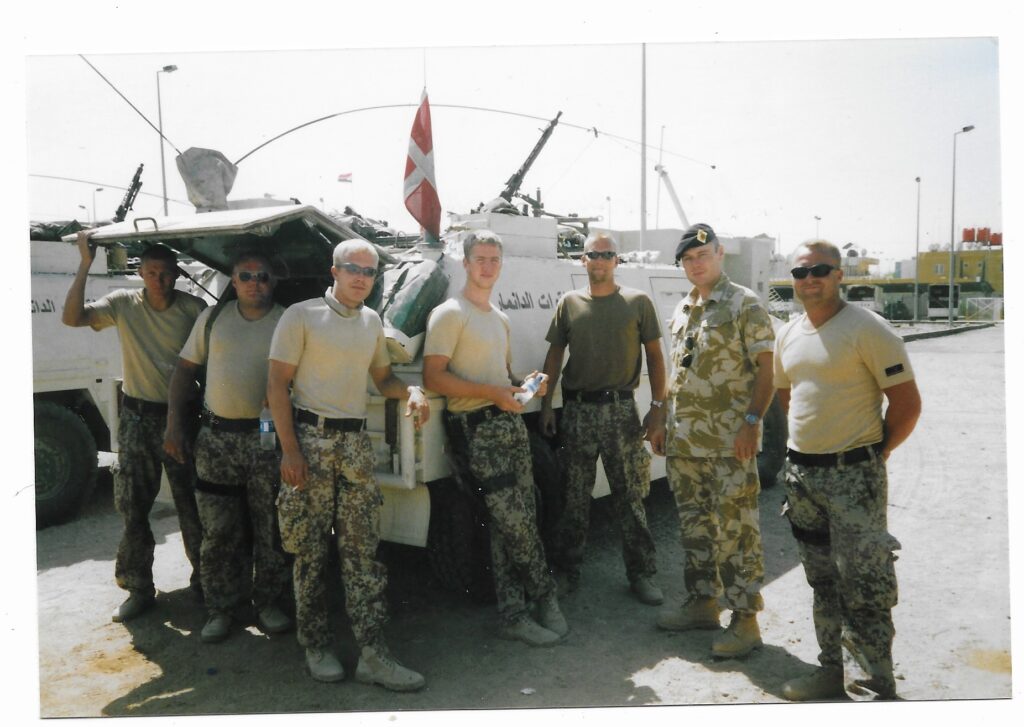
C4 Platton, Messines Company and UANBAT troops in Basra, – September 2004. 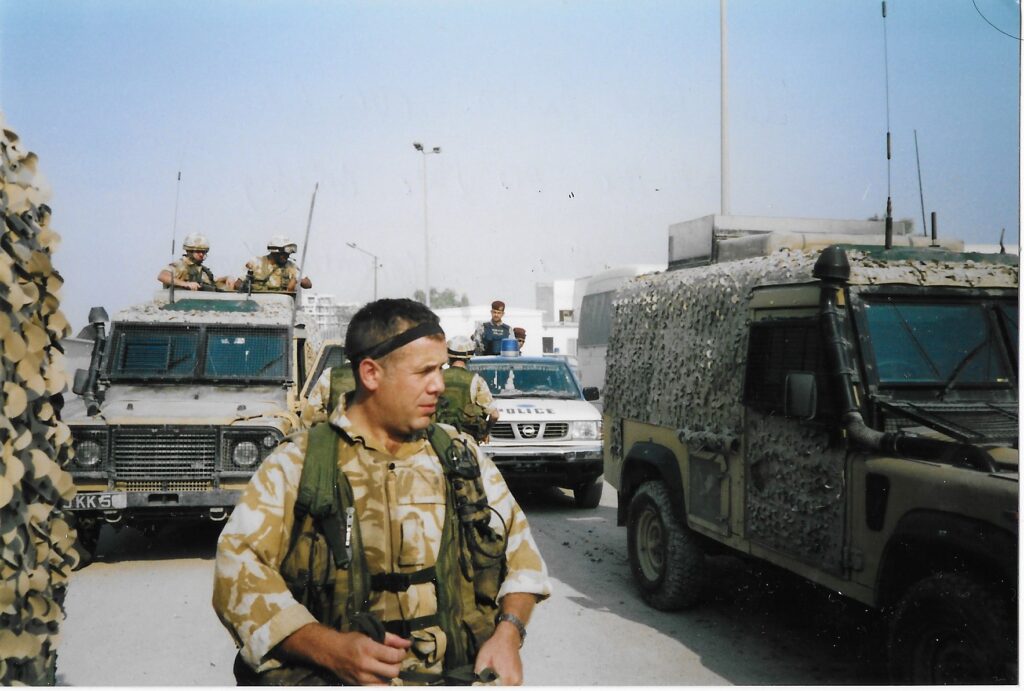
State Building, Basra – September 2004. 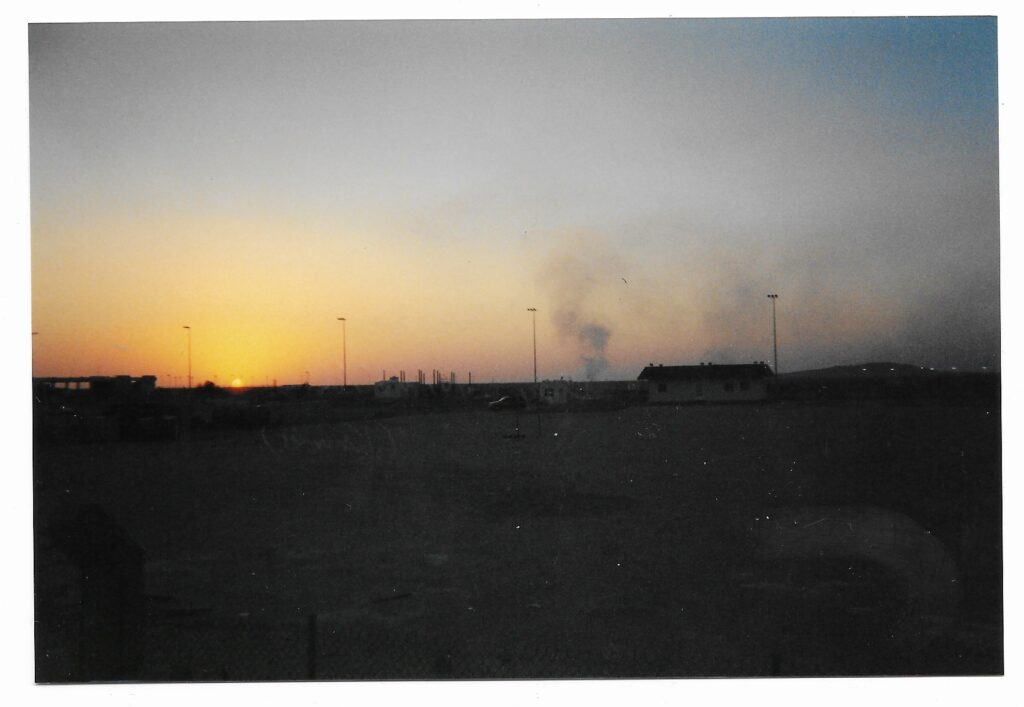
Camp Naustar – September 2004. 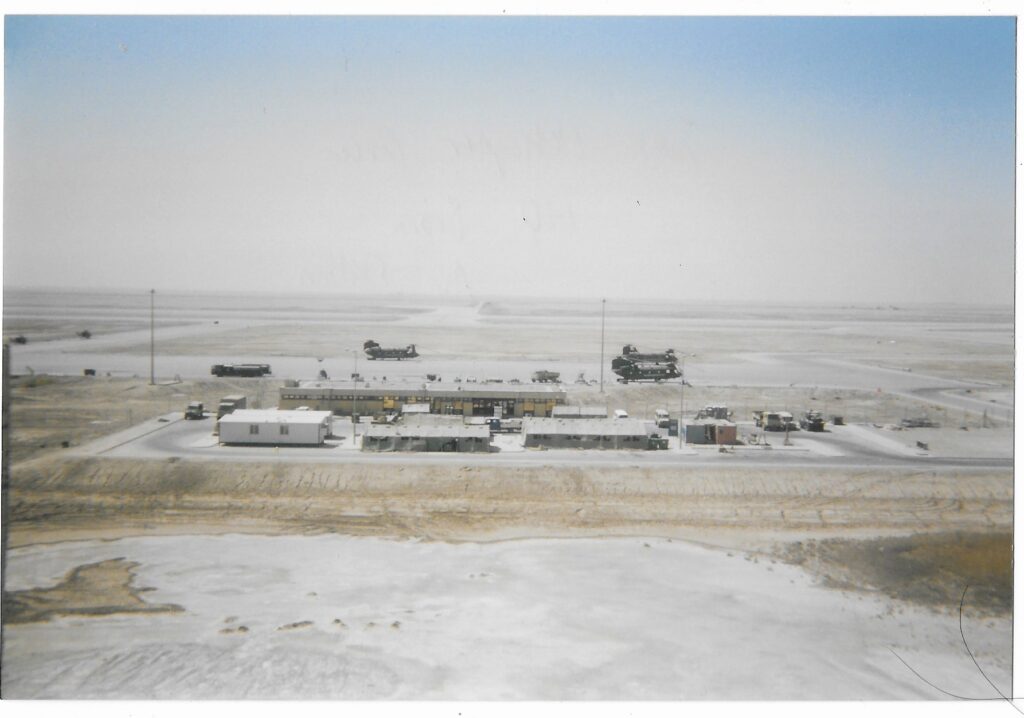
Joint Helicopter Force, HQ Basra Air Station. 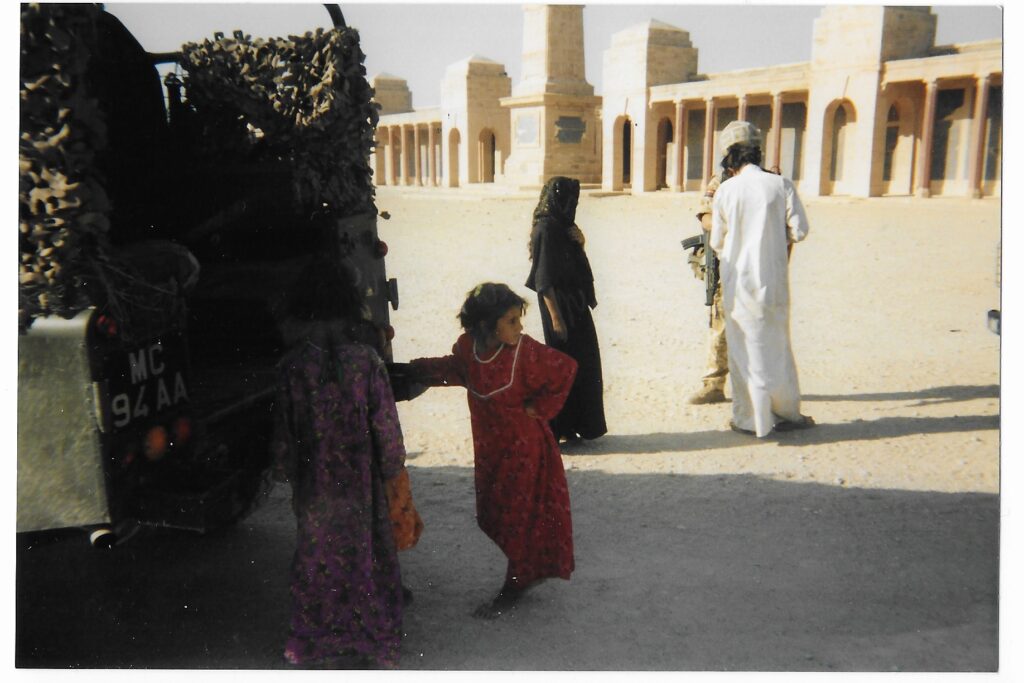
Visiting the First World War Memorial in Basra – September 2004. 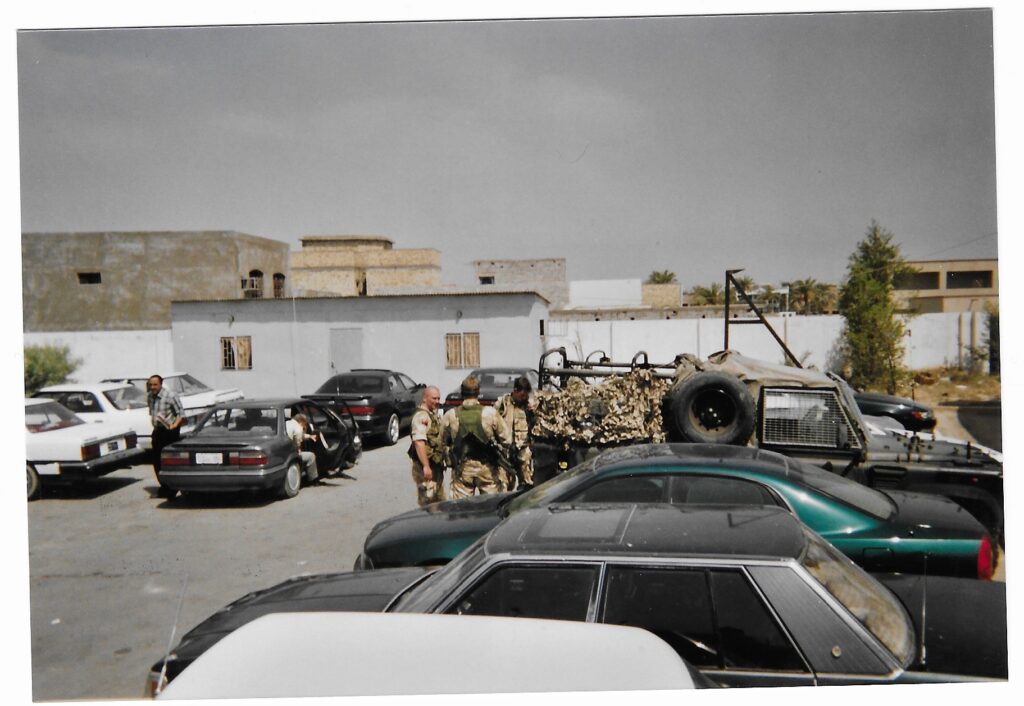
4 Platoon, Tactical Support Unit of Iraqi Police HQ. 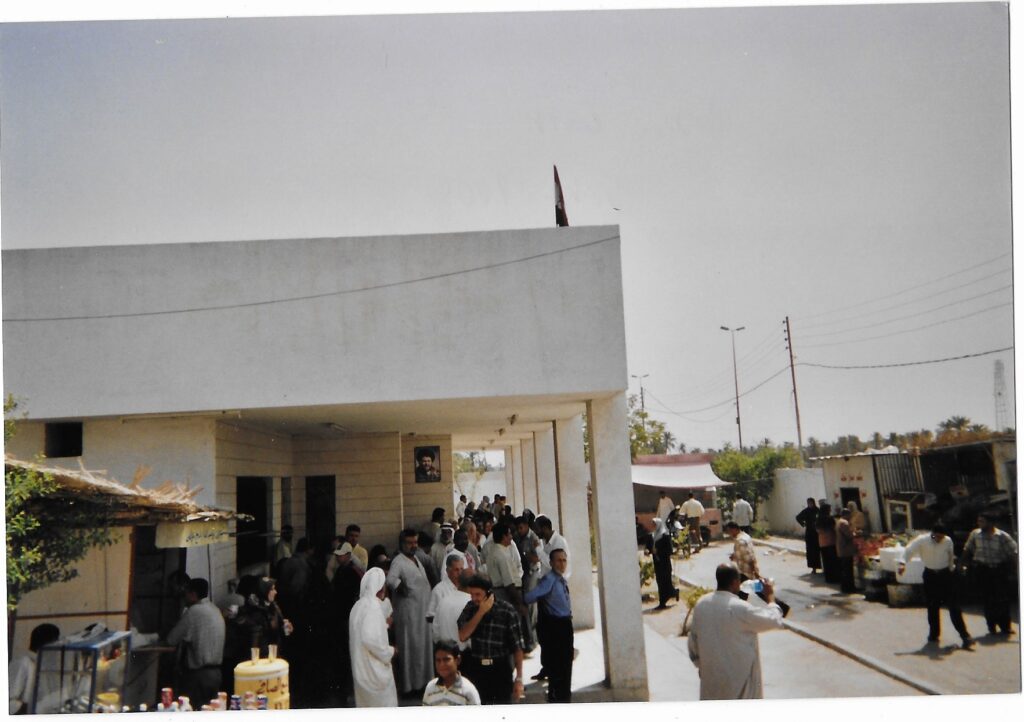
Basra – July 2004. 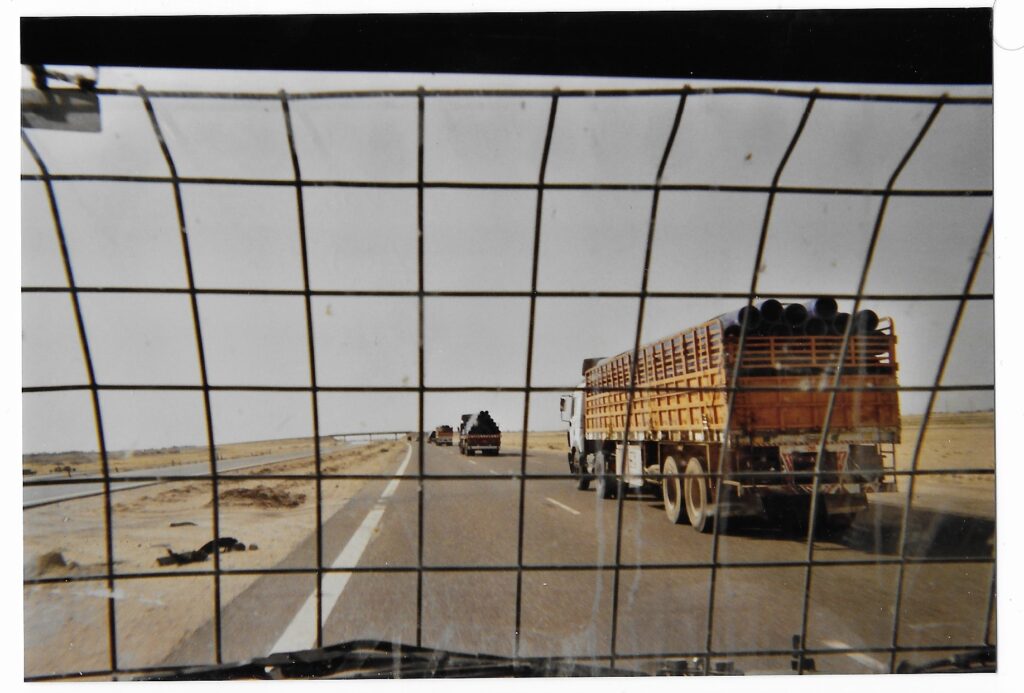
Convoy carrying water pipeline to Basra Air Station. 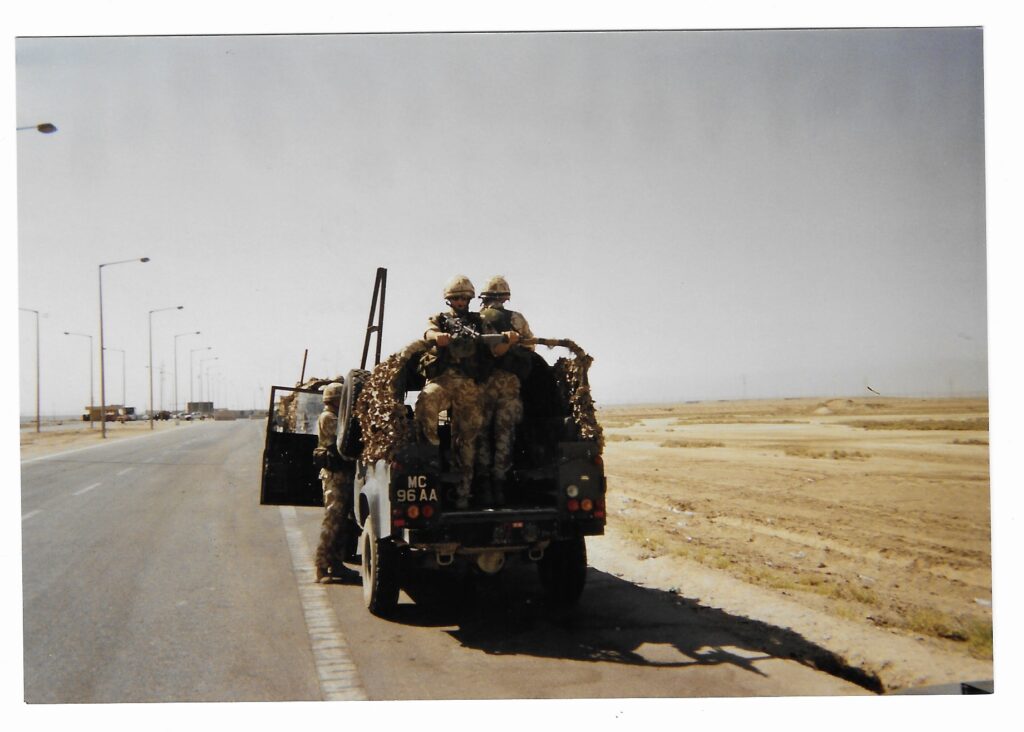
4 Platoon, Messines Company departing Basra Air Station. 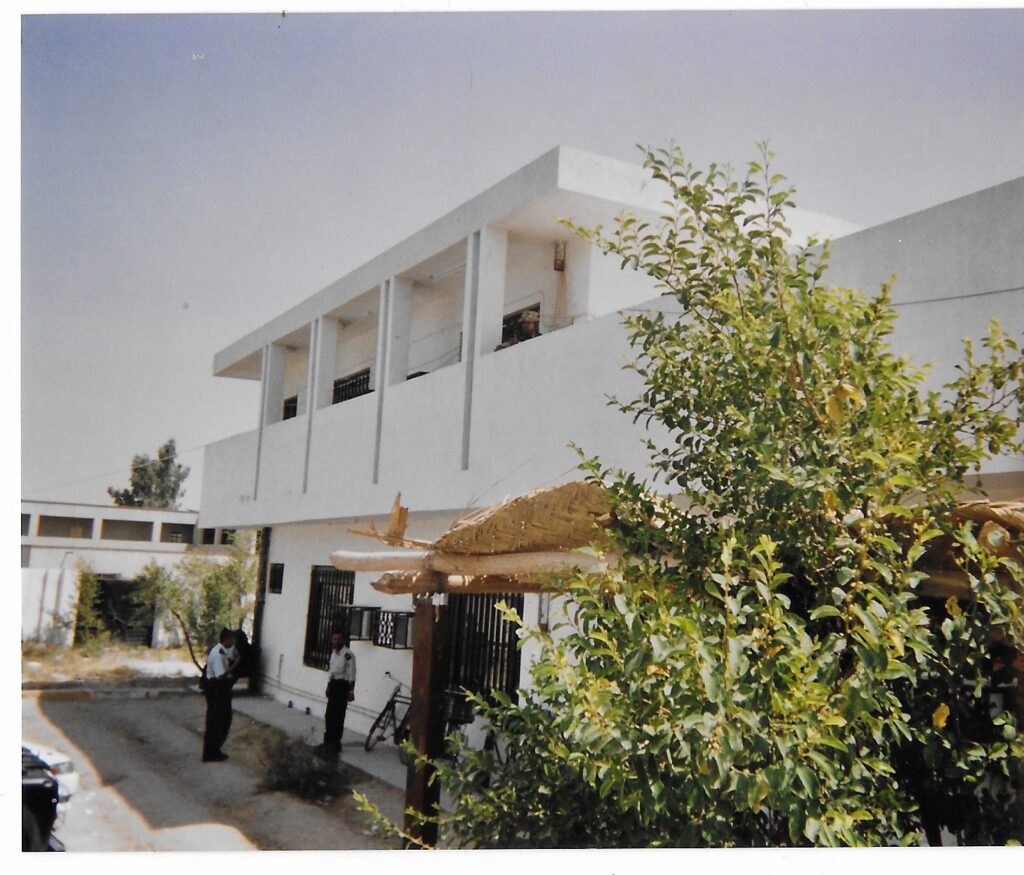
Accompanying LEGADs to Basra Court – July 2004. 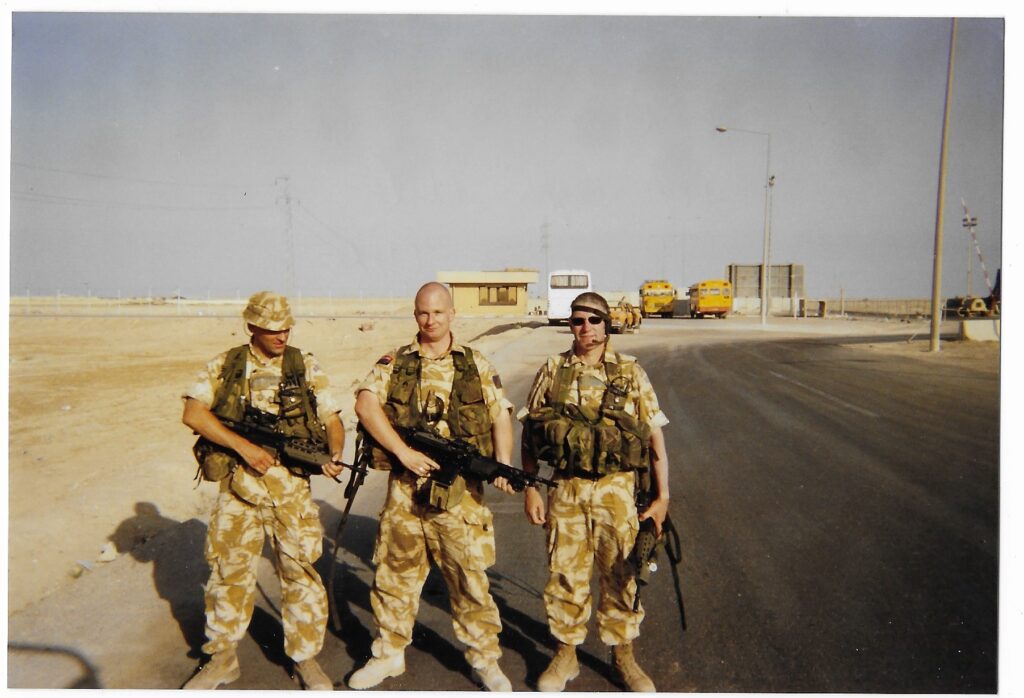
Outside PUCP Alpha, Basra Air Station. 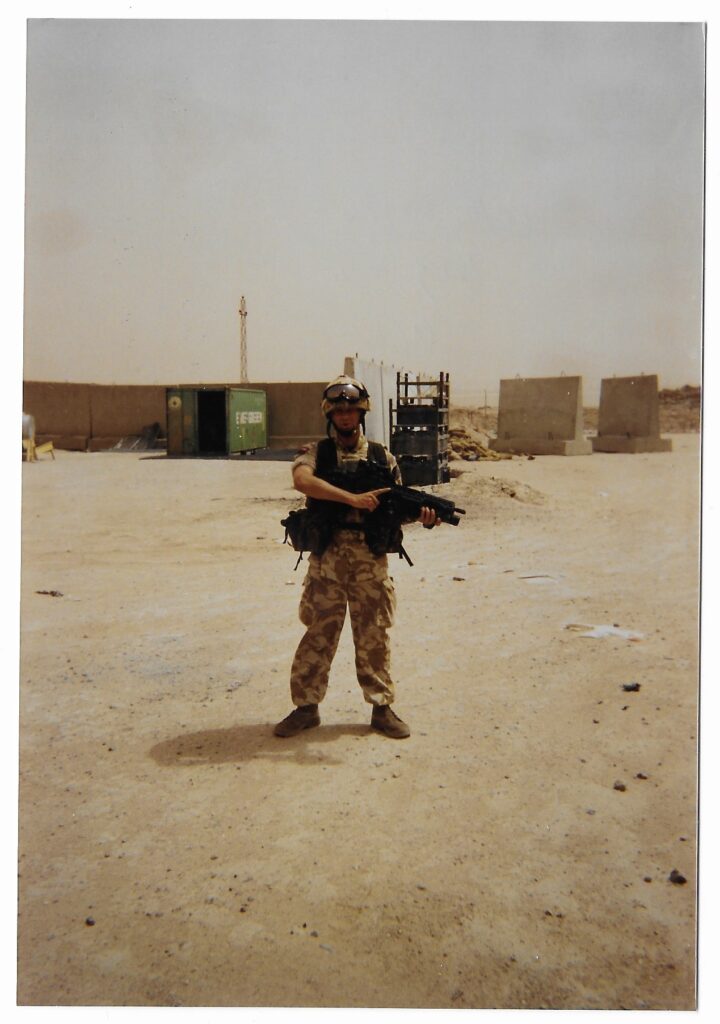
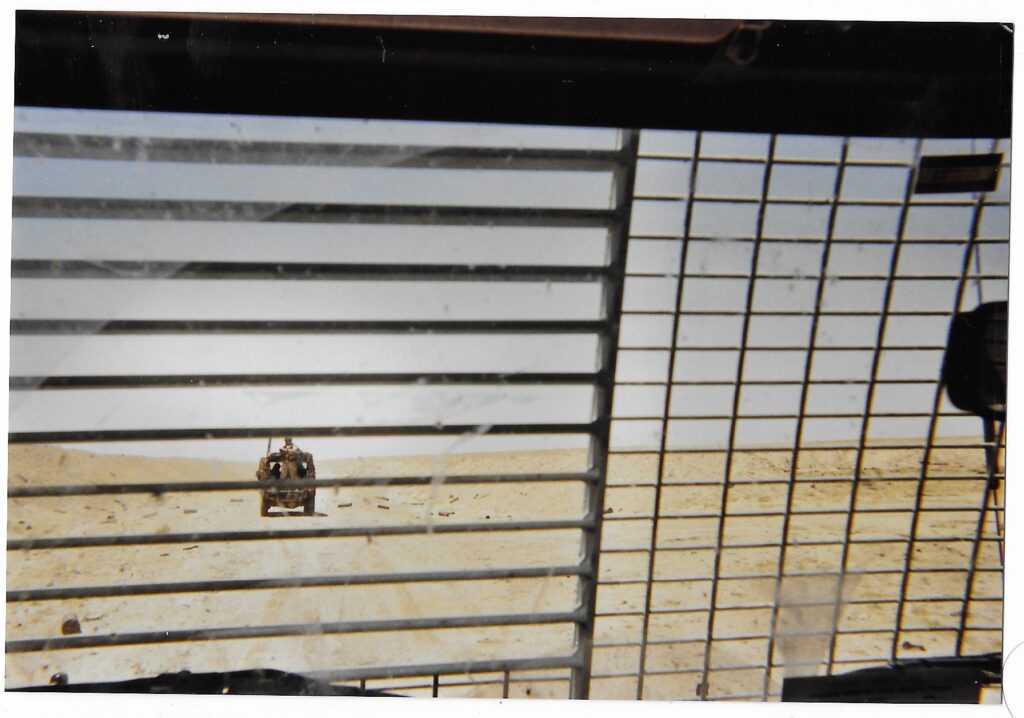
Patrol accompanying Intelligence Section disposing of UXO – July 2004. 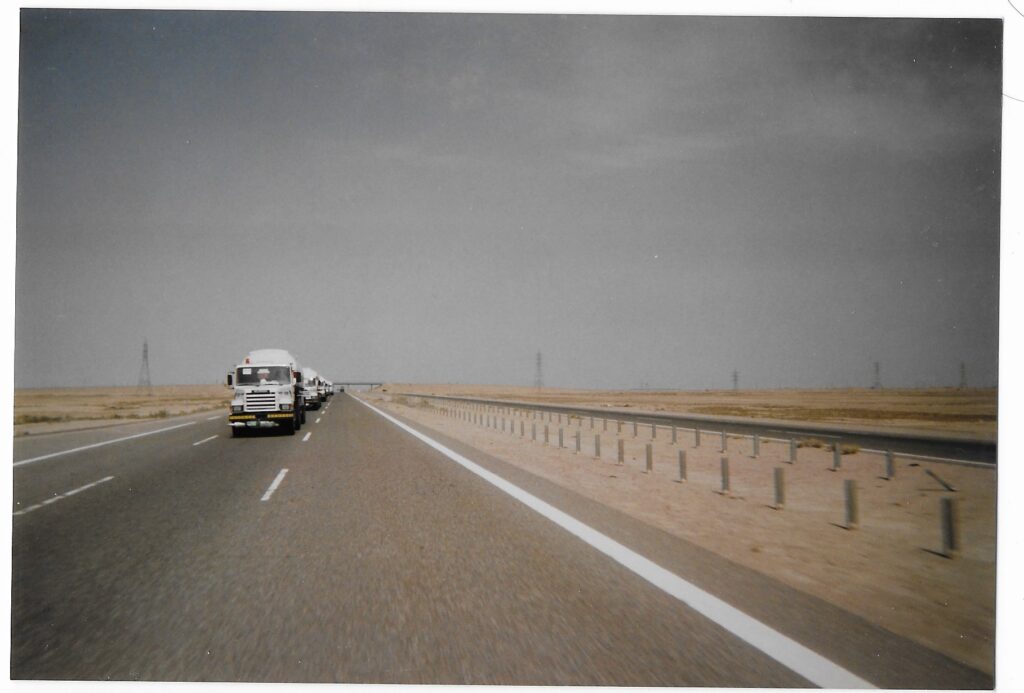
RAF Fuel Convoy. 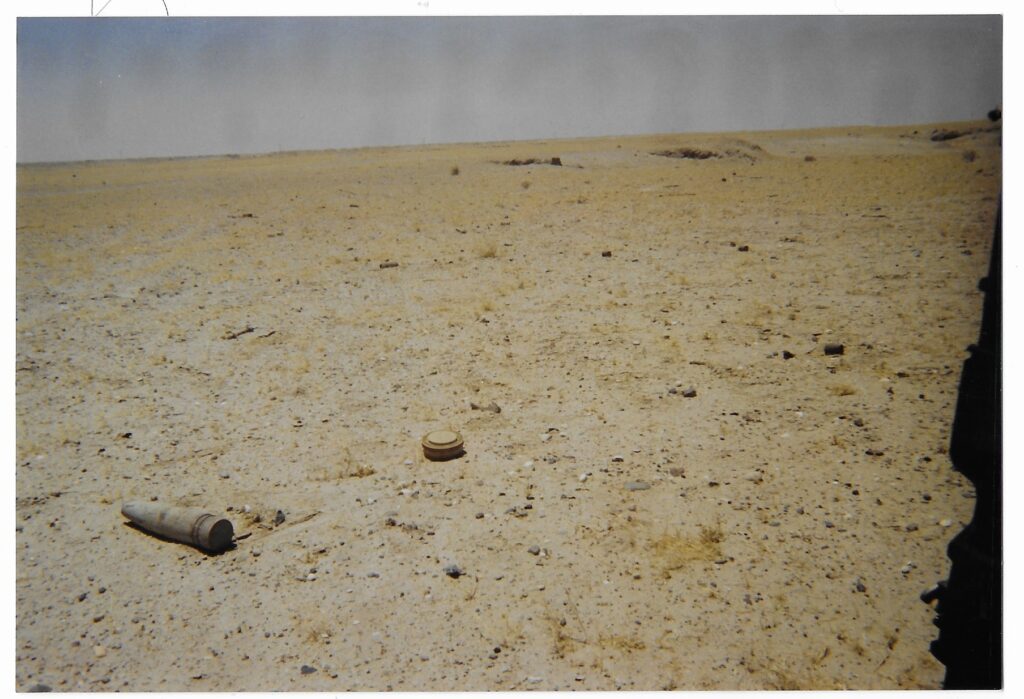
UXO – July 2004. 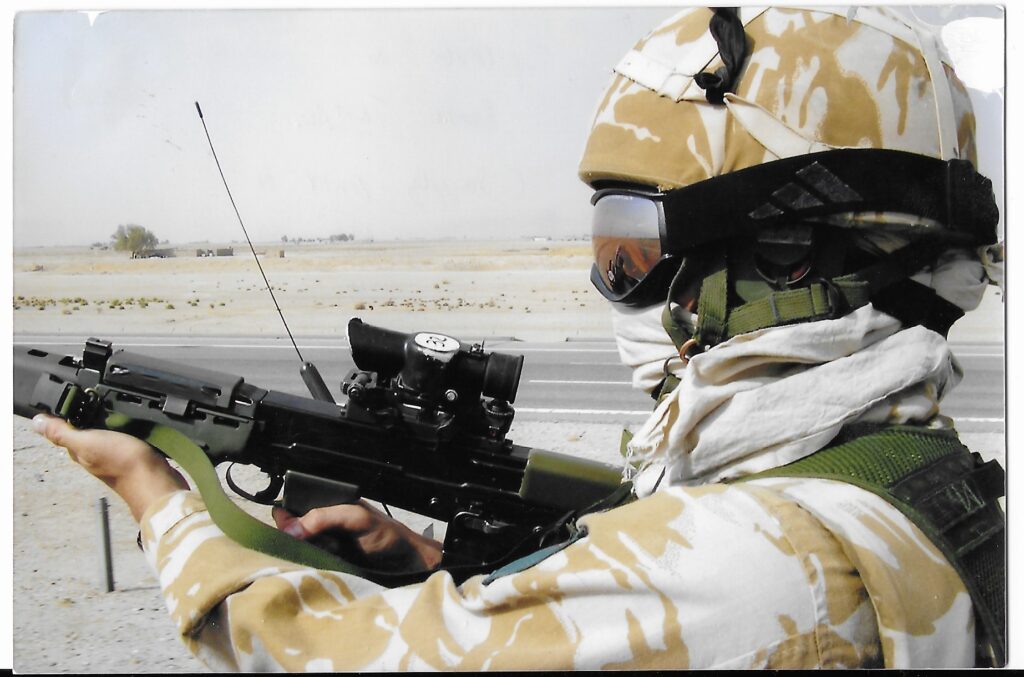
Supply Route to Kuwait – June 2004.
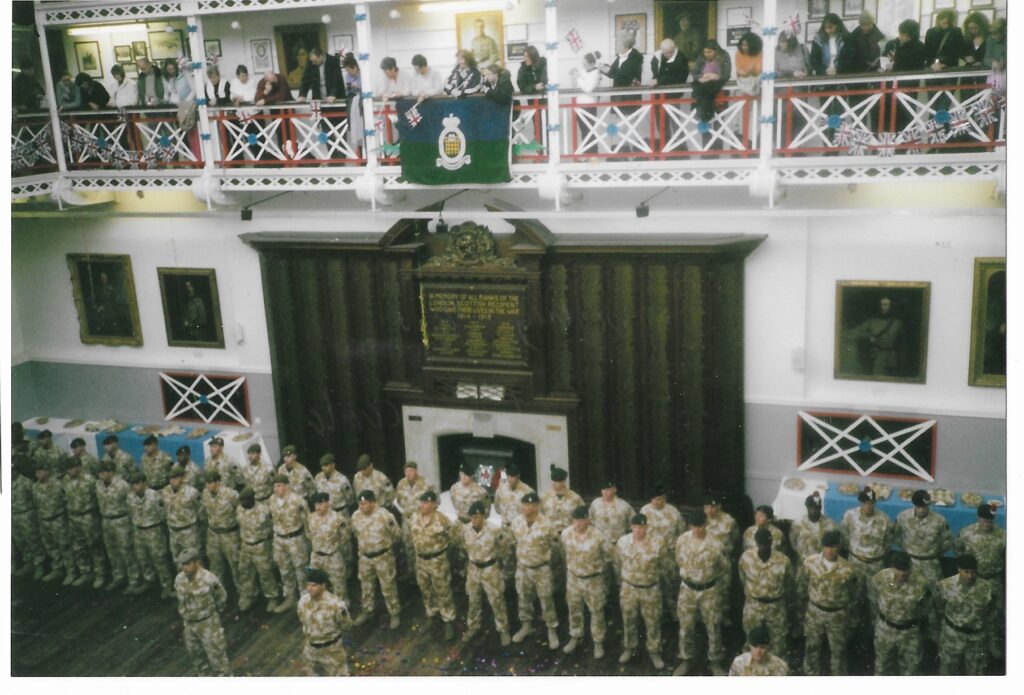
Patrick Pearse Kelly: 14th April 1936 – 28th July 2021
Pearse was born in Drogheda in the late springtime of 1936. He was extremely proud of his home town, always returning home at least once a year to visit close relatives and friends, to pay tribute to his local pubs and place a poppy wreath on the town’s War Memorial where his grandfather Patrick, a Royal Inniskilling Fusilier who died at Gallipoli in 1915, is commemorated. He was so proud to be a Drogheda man that there was a standing joke within the London Irish Rifles about his ancestors having been present at the Battle of the Boyne!
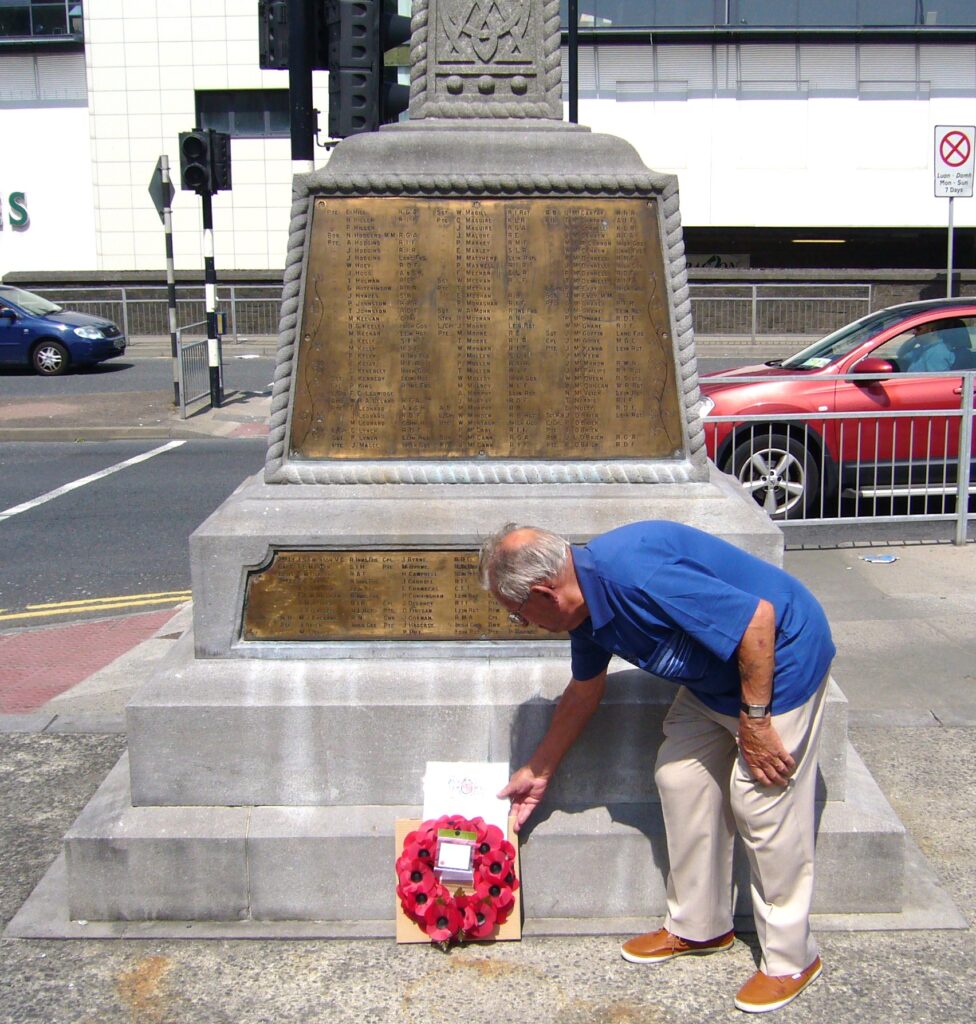
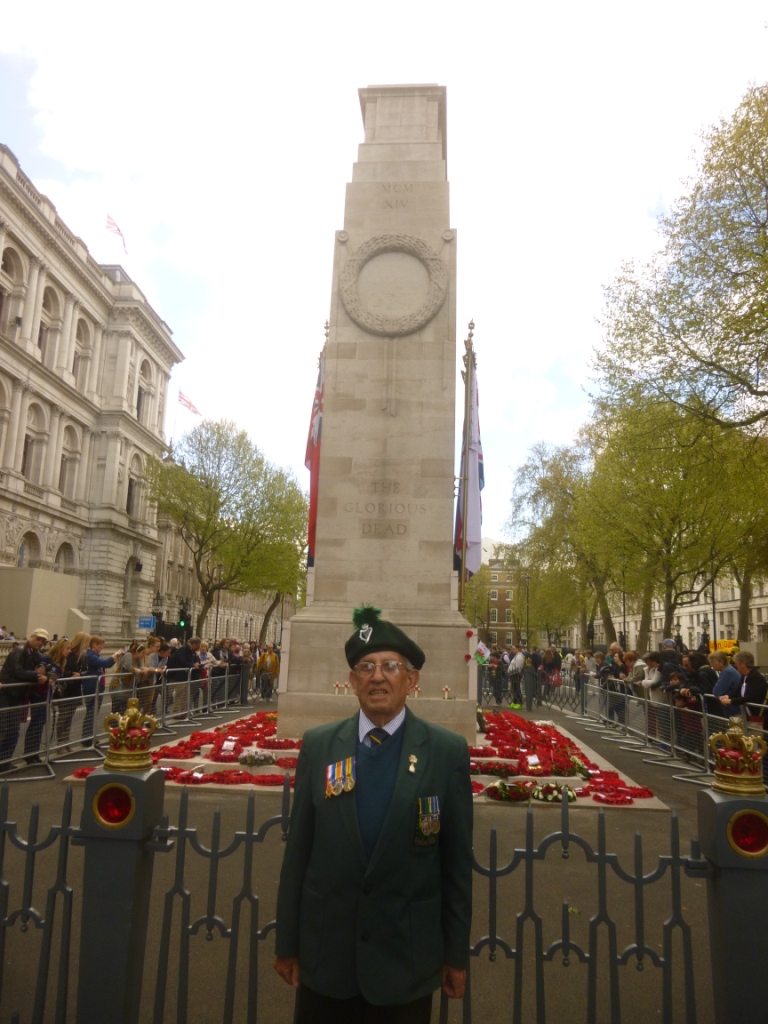
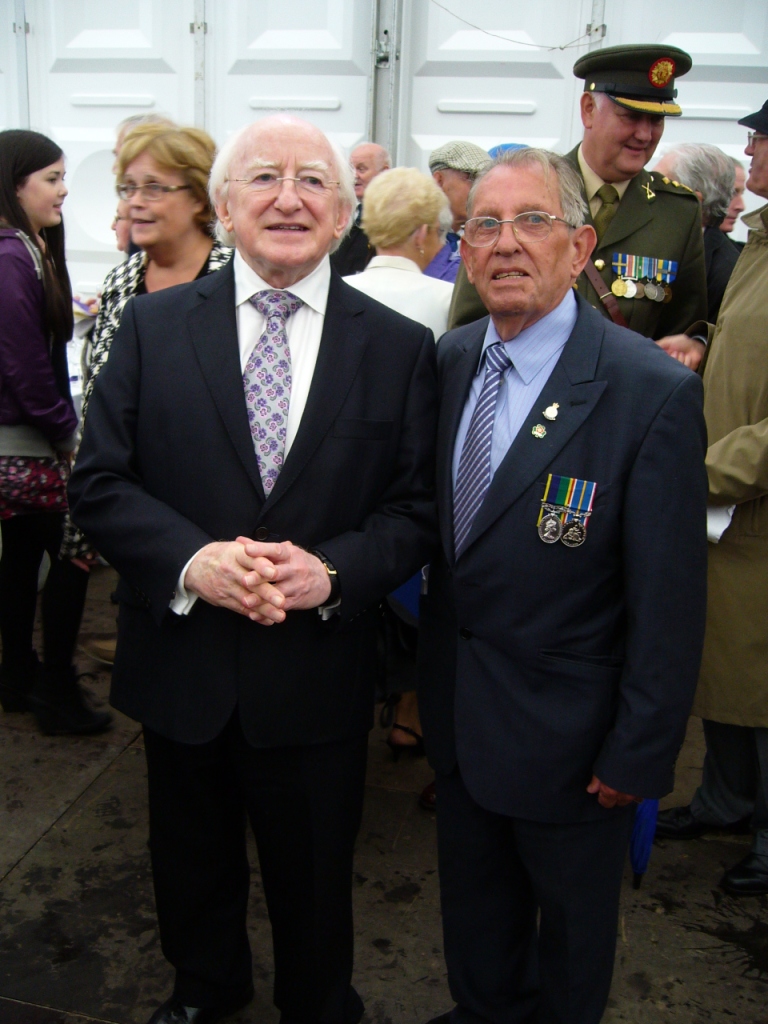
There is limited precise details known about Pearse’s army service, so what we have to hand is largely based on the recall of memories from Association Members. We do know that he joined the 1st Battalion London Irish Rifles in the late 1950s. Although Pearse was extremely keen to serve with the Royal Inniskilling Fusiliers, like his father and grandfather before him, he initially joined the Royal Irish Fusiliers before moving on to serve with the London Irish at the Duke of York’s. Pearse would also wear an Irish Reserve Army (FCA) Medal as he had attained seven years’ service with them before he moved to London. We’ve been informed that he served in the South Louth Infantry Battalion FCA and completed his Potential NCO’s course at the Curragh Training Centre before departing for England
His main duty within the London Irish was working as a cook in HQ Company for the Quartermaster’s Department, one of the most important jobs within a battalion, though he was regularly taken away from this role to play his part in battalion shooting teams and Courage Trophy teams (an infantry skills team competition, so he must have been fit!). Aside from the times that he wasn’t away soldering at weekends and camps, he ran the Officers’ Mess with great efficiency and continued through the changes in the late sixties when the battalion was reduced to a company of the North Irish Militia 4th Bn Royal Irish Rangers. Pearse would be awarded the Territorial Efficiency Medal, which he proudly wore alongside his National Service and FCA Medals.
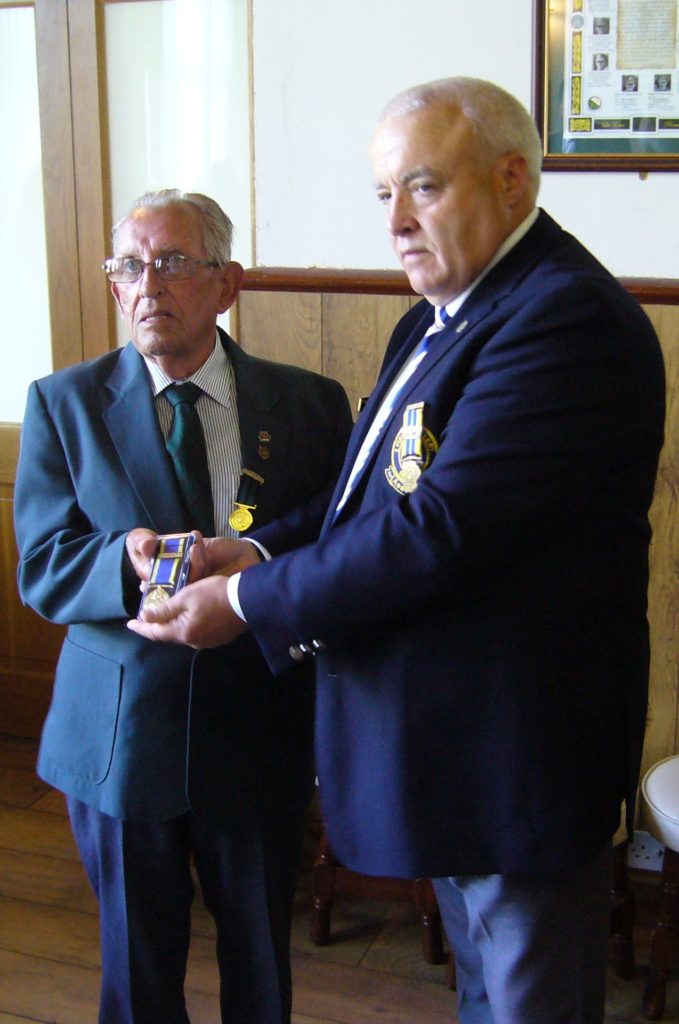
Although Pearse’s service with the London Irish Rifles finished in the early eighties, he remained a staunch member of the Regimental Association, always on parade and marching at the various St Patrick’s Day, Loos Sunday and Remembrance Sunday Parades. He was also a member of the Combined Irish Regiments Association and attended their Annual Parades in Whitehall, turning out smartly dressed in his green regimental blazer, medals and caubeen.
Pearse ensured he attended pilgrimages run by the Association and was present at many battlefield tours over the years, visiting France, Belgium, Italy and Sicily and even joined a small group who visited the 69th Fighting Irish in New York.
Pearse’s untimely death is a cruel blow not only to his family, his children, and grandchildren but also will be felt across the whole Regimental family. He will be sorely missed at our meetings and parades and we shall miss meeting up together, whether it be at Connaught House, in the Victory Services Club, at the Civil Service Club or at the Royal British Legion in Paddington.
We shall miss Pearse…We shall definitely miss him.
Peter Lough.
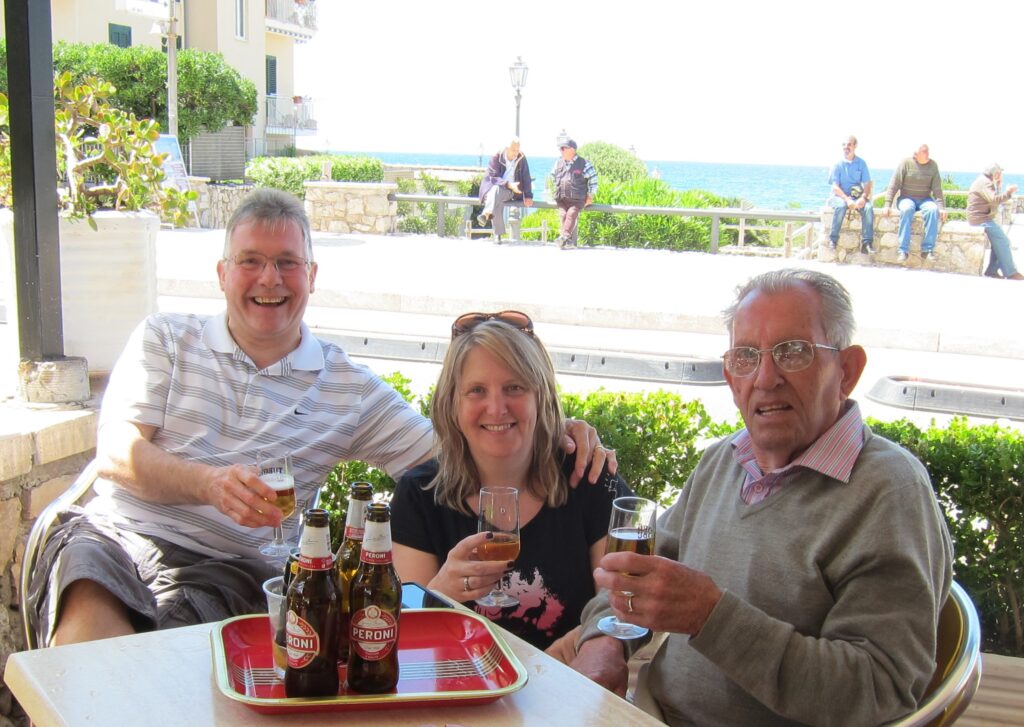
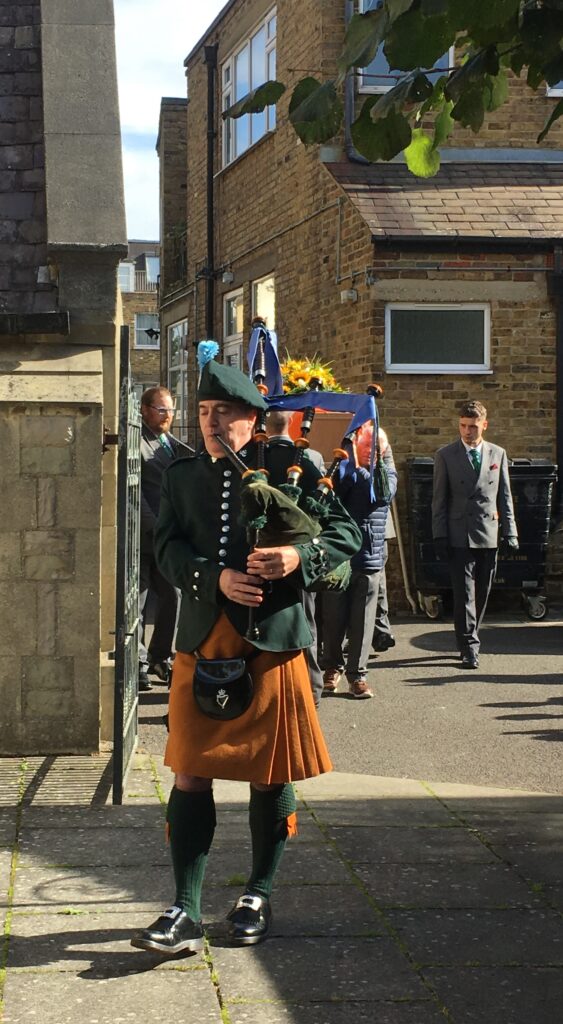
Gerald Griffin playing at Pearse’s funeral in September 2021.
Pearse Kelly receives FCA Medal
In July 2018, Pearse Kelly was presented with his 7 years service Fórsa Cosanta Áitiúil (Reserve Defence Forces) medal by Commandant Richard Armstrong at McKee Barracks, Dublin.
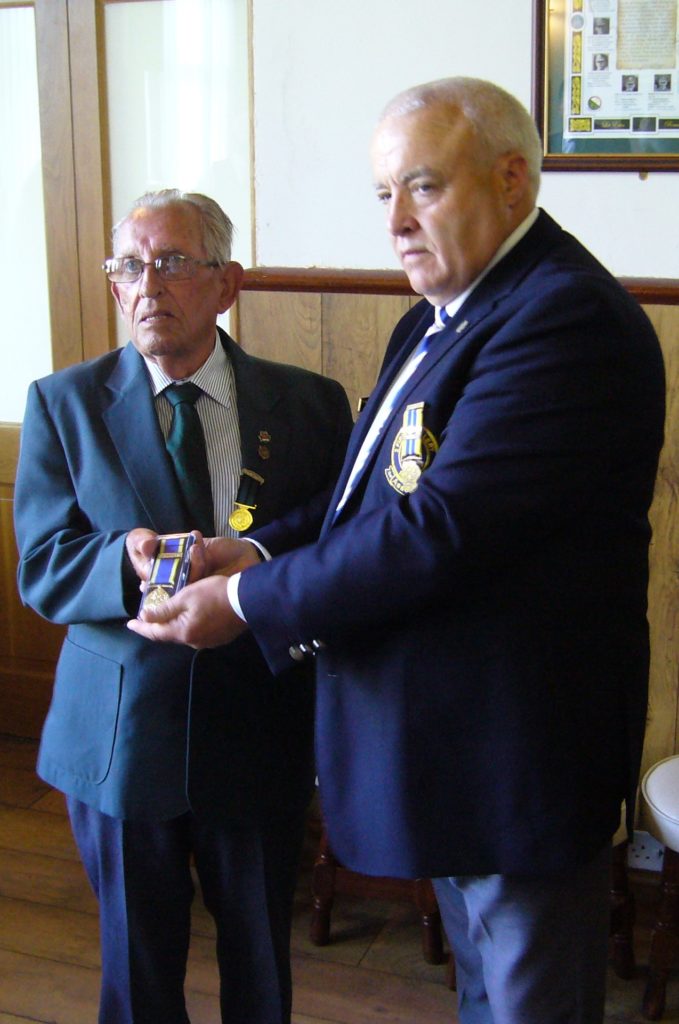
Memorial Plaque Unveiling in Piedimonte Etneo.
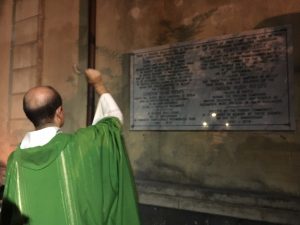
The Regimental Association was honoured to attend a Commemorative event in the town of Piedimonte Etneo on the north eastern slopes of Mt Etna that took place on the exact 75th anniversary of the date when men of the 1st Battalion, London Irish Rifles entered the town in early September 1943.
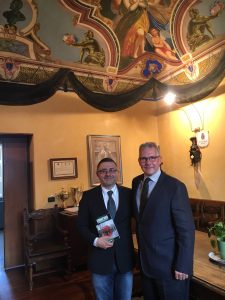
The Chairman, Major Peter Lough, and Association Members, Richard and Edmund O’Sullivan, whose father served with the 2nd Battalion in Sicily, attended a Service of Remembrance at the town’s Chiesa Madre before a marble plaque was blessed by the parish priest, Dom Mario, outside the church. The plaque honours the memory of the 90 members of London Irish Rifles and numerous Sicilians civilians who died during the fighting on the island.
The 1st Battalion London Irish Rifles would stay in Piedimonte for over a month from 8th September to 10th October 1943 when they en-shipped for Naples. A witness to the events of 1943, Angelina Vitale, was on hand to tell us of the day when she and her family welcomed the London Irish into her home town as liberators and garlanded them with flowers.
It is really quite remarkable, that in a small town in Sicily, there are now two memorials dedicated to the men of the London Irish Rifles – entirely funded by the local townspeople.
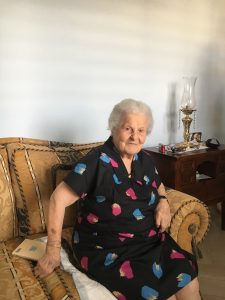
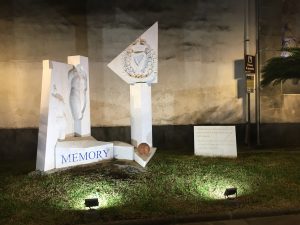
Thanks are due to Dom Mario, Mayor Ignazio Puglisi, Deputy Mayor Giuseppe Pagano, the President and Members of the Town Council and all the townspeople of Piedimonte Etneo for their fantastic welcome again.
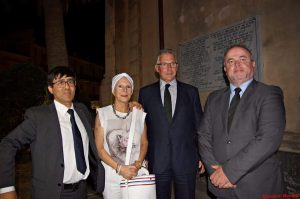
The Association Chairman’s speech is reproduced in full below:
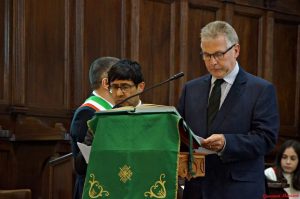
I am delighted to visit your lovely town again. This is my third visit here to Piedimonte and I would like to thank you all for your usual most hospitable welcome. Today’s commemorative event is a truly remarkable one for our Regimental Association.
As you know, 75 years ago this week, the 1st Battalion of the London Irish Rifles arrived in this town after a very difficult period when they were embattled on the east coast of Sicily during July and early August of 1943. On 8th September 1943, the men of the London Irish Rifles moved from the coastal area near Fiumefreddo to the cooler climes of this town. It was a very welcome move and it is perhaps not surprising that our Regimental history stated that: “Piedimonte was the most comfortable place that the Battalion had stayed at since leaving England in August 1942…” Some of you will remember that day when London Irish Riflemen, wearing what some of you thought were “orange skirts”, entered the town – I can certainly see Angelina, who did indeed witness those historic events.
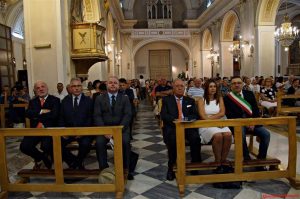
Two weeks after the London Irish Rifles arrived, a Parade and Service of Remembrance would be held here in the town to commemorate one of our Regiment’s most famous battles during the Great War: the Battle of Loos that took place in northern France. The Commanding Officer of the 1st Battalion London Irish Rifles, Lt-Colonel Ian Good, addressed the parade in Piedimonte that day.
Our Regimental records noted that after the parade:
“the Battalion marched to their respective services, both Roman Catholic and Anglican, which were held for the remembrance of men of the Battalion who fell in the battle of Loos and for those who fell in the fighting in Sicily.” One of the services, held here at this church at that time, was conducted by Father Denys Rutledge, along with our own battalion’s padre, Father Treacy.
At this point, I would like to reflect on the memories of those desperately difficult days in September 1943. Both the Riflemen and the people of Sicily had suffered so much over the previous months, and it was quite fantastic that they could all come together in fraternal friendship during the 5 weeks that the town of Piedimonte hosted their visitors.
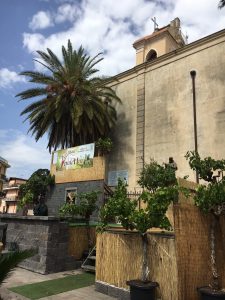
I am sure that the moments of deep prayer and solemn contemplation and reflection were directed to both the military combatants of all countries and the civilians of Sicily, who were sadly caught up in the fighting on the island. I am equally sure that the events of the day would have been of great spiritual comfort to everyone and would indeed have contributed greatly towards a continuing period of close mutual friendship in the town until the London Irish reluctantly left Piedimonte on 10th October.
As I say, 25th September 1943 was a most important day of reflective contemplation that has been mirrored at the Service of Remembrance here today. It is a most remarkable thing that I can now look out across to your own War Memorial marking the sacrifices of the Great War, the Memorial that is dedicated to men of the London Irish Rifles and can also stand close to the Commemorative Plaque.
I cannot thank you enough for such an incredibly generous and moving occasion that will further underpin the deep friendship between the London Irish Rifles Association and the people of Piedimonte Etneo, both today and far into the future.”
Major-General C W B Purdon, CBE, MC, CPM
Corran Purdon was born in Queenstown, County Cork but would spend part of his early childhood in India where his father, Major General W Brook Purdon DSO MBE MC, was serving with the Royal Army Medical Corps. He would be sent to school in London and Northern Ireland before attending Campbell College in Belfast and commented later that “my Irish education made such a difference to me when I joined my Regiment – and my ability to play the bagpipes was another asset.”
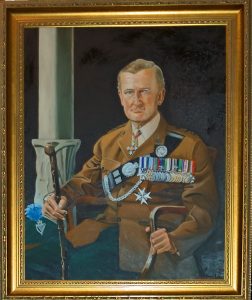
After passing the Army Examination, Corran Purdon entered the Royal Military College at Sandhurst in July 1939, and, following the outbreak of the Second World War, was commissioned into the Royal Ulster Rifles (RUR). His father had once said that “there’s only one regiment for the boy, the Royal Ulster Rifles” and so it came about that early in 1940, the young subaltern travelled to the RUR’s Regimental Depot, which was then located at Armagh. During the early period of the war, he would encounter a large number of men of all ranks from the London Irish Rifles, which was then part of the Corps of the Royal Ulster Rifles.
After missing the chance to join the 2nd Battalion (2 RUR) in France in early 1940 due to his young age, Lieutenant Purdon volunteered to join 12 Commando who were forming in Northern Ireland. After more than a year of intensive training in various parts of the United Kingdom, in March 1942, he would take part in Operation CHARIOT, the commando raid on the Normandy dock at St Nazaire in German-occupied France, an important strategic asset for the German fleet in World War Two. The raid, which entailed ramming a ship, the Campbeltown, laden with explosives on a set timer into the dock, was a success but at the cost of 169 men killed and 215 captured. Having been wounded in the left leg and shoulder, Lieutenant Purdon was wounded and captured. He was a persistent escaper from a number of different POW camps, and so was sent OFLAG IV-C – Colditz Castle to which officers who persistently made escape attempts were transferred. When liberated by the Americans in April 1945, both he and another Rifles’ officer decided that they wanted to have “another crack” at the enemy, so they fought in the ranks with the American Army until VE Day.
On his homecoming, Lieutenant Purdon had an initial desire to remain with the Commandos but would soon return to the Royal Ulster Rifles, then still part of the 6th Airborne Division, and was appointed Adjutant of the 1st Battalion (1 RUR), who were taking part in riot control and anti-terrorist operations in Palestine. On promotion, in early 1946, Captain Purdon was sent to command the Regimental Company at the Irish Group Infantry Training Centre at Omagh before spending two years as Adjutant of the 6th Battalion, Royal Ulster Rifles (TA), the first Territorial Battalion of the Regiment to be raised in Northern Ireland. In 1949, he was appointed as a Staff Captain at General Headquarters Middle East Land Forces located at Fayid on the Suez Canal, before being posted back to 1 RUR in Hong Kong as a Rifle Company Commander.
In early 1952, Major Purdon was appointed Training Major for the 1st Bn London Irish Rifles TA at the Duke of York’s Headquarters. He described the Regiment as “full of characters” and later recalled that after his initial visit to the battalion he had noticed that “someone had attempted to boil an egg in my bowler hat!!” The Commanding Officer was Lieutenant Colonel John Cantopher and there were number of other well known figures present at the time, including Colonel Viscount Monty Stopford, Major Basil Irwin and Major Bill Brooks.
In his memoir ‘List the Bugle’, he would describe his time as Training Major with the London Irish Rifles:
“Continuity was the most difficult thing to achieve in a TA battalion but we prepared a basic programme that produced as sound a standard of individual training as we could and then did our best to raise the standard of tactics at section level and above. We used to run evening sand table exercises for officers and for NCOs, followed by TEWTs at weekends, which were succeeded by actual exercises to practice what had been learnt. Company and battalion training took place at Annual Camp.” He would speak very warmly about his time with the Regiment: “The London Irish have a terrific esprit de corps and an enviable record and I had greatly enjoyed my two years with them.”
In 1953, Major Purdon passed the entrance examination for entry into the Staff College and, after completing his time there, he took up a role as Deputy Assistant Adjutant General at the GHQ Far East Land Forces in Singapore. While working in the section dealing with terms and conditions of service and with the manpower of infantry battalions, he would regularly slip away from his desk to join officers, NCOs and men fighting the communist insurgency in the Malayan jungle.
Before taking up his next role in command of the Regimental Depot at St Patrick’s Barracks in Ballymena, Major Purdon spent a few months again with 1 RUR, this time in Cyprus, taking part in operations against EOKA. After the depot, he was posted as Second-in-Command of 1 RUR in West Germany before taking over command in April 1962. The battalion returned home for a period in May 1963 before they travelled to South East Asia in early 1964 to undertake operations in Borneo where they confronted Indonesian armed incursions across the border of the Federation of Malaya.
Following two years as a Chief Instructor at the All Arms Tactical Division of the School of Infantry at Warminster, in 1967, Brigadier Purdon took command of the Sultan’s Armed Forces in Oman, which over the next three years included taking part in operations in Dhofar and in the northern part of the country. On return to the UK in 1970, he became Commandant of the School of Warfare in Warminster. He was promoted to Major General in May 1972 and appointed as General Officer Commanding (GOC) North West District before being posted to Cyprus as the last GOC Near East Land Forces.
In 1976, Major General Purdon retired from the Army after 37 years of service and would say that he “had never wished to be anything but a soldier and had hated the prospect of leaving it and its comradeship; the splendid men and women of all ranks of its regiments and corps, together with the excitement and the immense satisfaction of doing the thing you liked best in the world.”
On returning to the UK at the end of his army career, he became a commander of St John Ambulance and governor of the Royal Humane Society, before being appointed as Deputy Commissioner of the Royal Hong Kong Police Force from 1978 to 1981.
The French government awarded Major General Purdon the Medaille d’Honeur de St Nazaire in 2000 and appointed him Chevalier de la Legion d’Honneur in 2005.
Major General Purdon was appointed Honorary Colonel of the London Irish Rifles in 1986 and remarked that his great, great uncle Colonel James Ward had also been the Colonel Commandant of the Regiment at the end of the 19th century. In 1994, he became President of the Regimental Association and would continue to be a regular inspecting officer at Association events for the past quarter of a century.
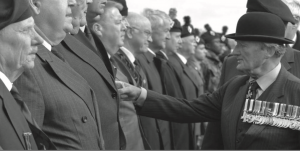
General Corran’s close connections with the London Irish Rifles over so many years has been a constant treasurable pleasure for us all and it was always a privilege to meet him. Whether you were a member of D Company, the Regimental Association or the Army Cadet Force, he would always share a kindly word or generous piece of advice with everyone he met.
The entire Regimental family would like to send their sincere condolences to all the family.
Major-General C W B Purdon, CBE, MC, CPM.
4th May 1921 – 27th June 2018.
Quis Separabit.
Links:
‘‘Corran William Brook Purdon, Oral History’, published by the Imperial War Museum in 1998.
‘List the Bugle: Reminiscences of an Irish Soldier’, published in 1993.
Obituaries.